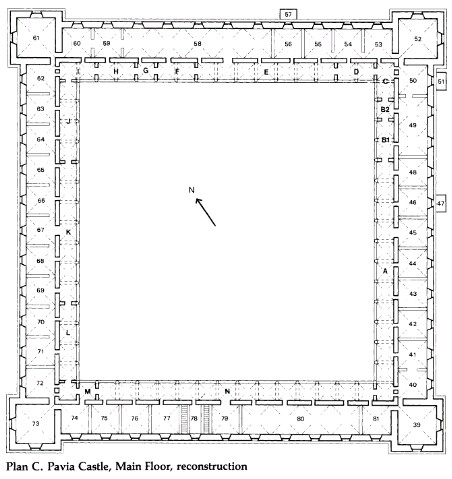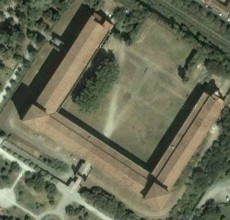Bonifacio Bembo was commissioned to repair older frescoes (at least partly made by Pisanello) and to create new frescoes in Pavia Castle in 1469. The sum of 8000 ducats let us assume greater changes in the period 1469-71. The works were partly destroyed in the battle of Pavia 1525, nowadays only some distributed fragments have survived. One of the new frescoes "in the room, where the women eat" was defined to get game motifs, between them Trionfi cards.
The whole project is described by Evelyn Samuels Welch in the article Galeazzo Maria Sforza and the Castello di Pavia, 1469, in The Art Bulletin, Vol. 71, No. 3 (Sep., 1989), pp. 352-375.
The note to the Trionfi card scene is only short:
|
"The next fresco in the duchess's suite was for the saletta ove manzano in the loggia, the first overt indication of a room's function. But the fresco there makes little reference to dining, warning against assumptions that the paintings necessarily reflected the purpose of each room. Here, the new bride [Bona of Savoy], her sister-in-law Elisabetta [Elisabetta Sforza, in 1469 13 years old and soon was married the same year to a 5x older widower, the marquis of Montferrat Guglielmo Paleologo] and other members of her court were shown playing a feminine version of balla, the game of poma, palma or tarot cards, al triumpho. These subjects were popular decorative themes in Lombard palaces. All three games are depicted in the Giochi Borromei in the Palazzo Borromeo in Milan" ...() "But the only aspect of the Pavian fresco that related to the room's function as a dining room was an odd final vignette of a dwarf bringing mushrooms to the duchess". |

(autorbis)

Pavia Castle today

Borromeo fresco
with card players